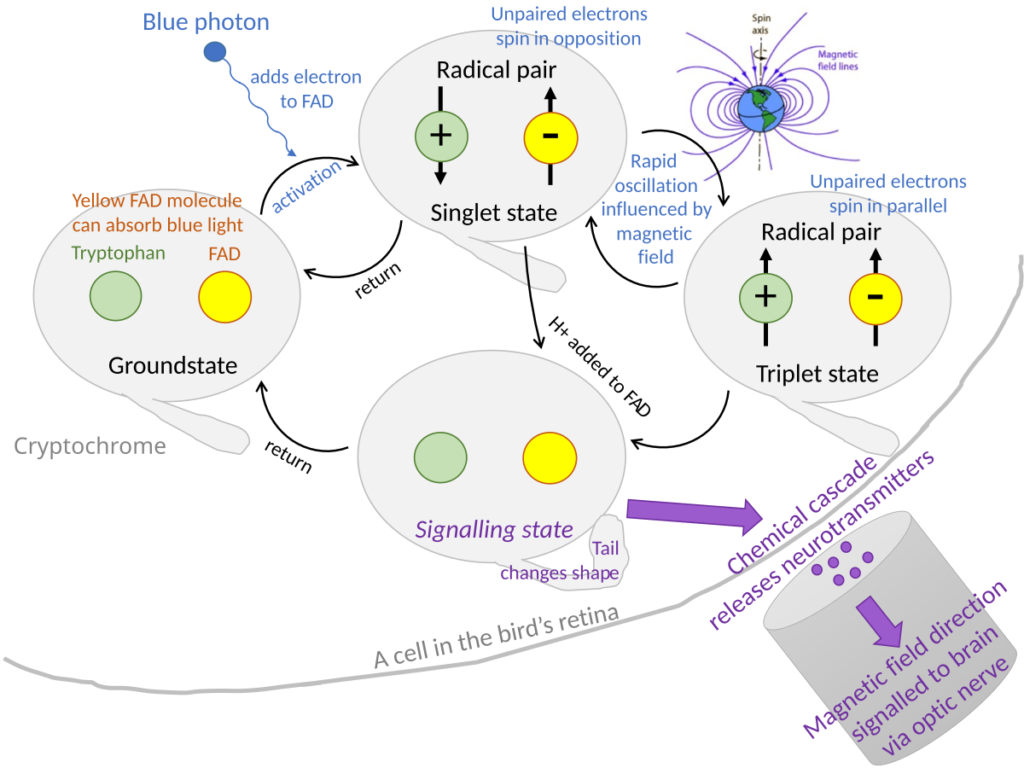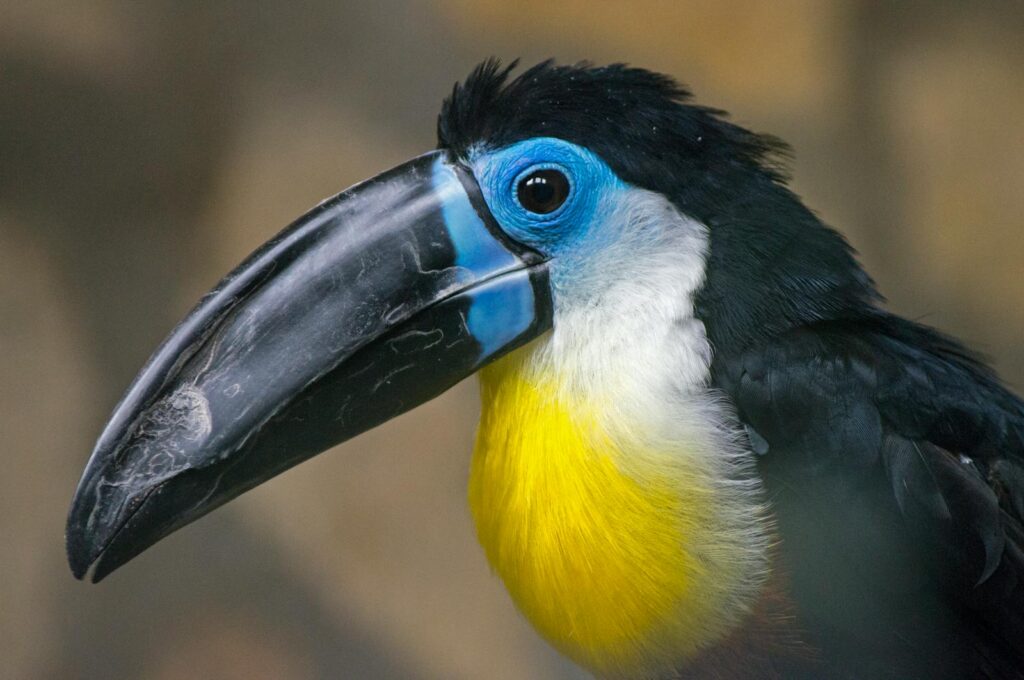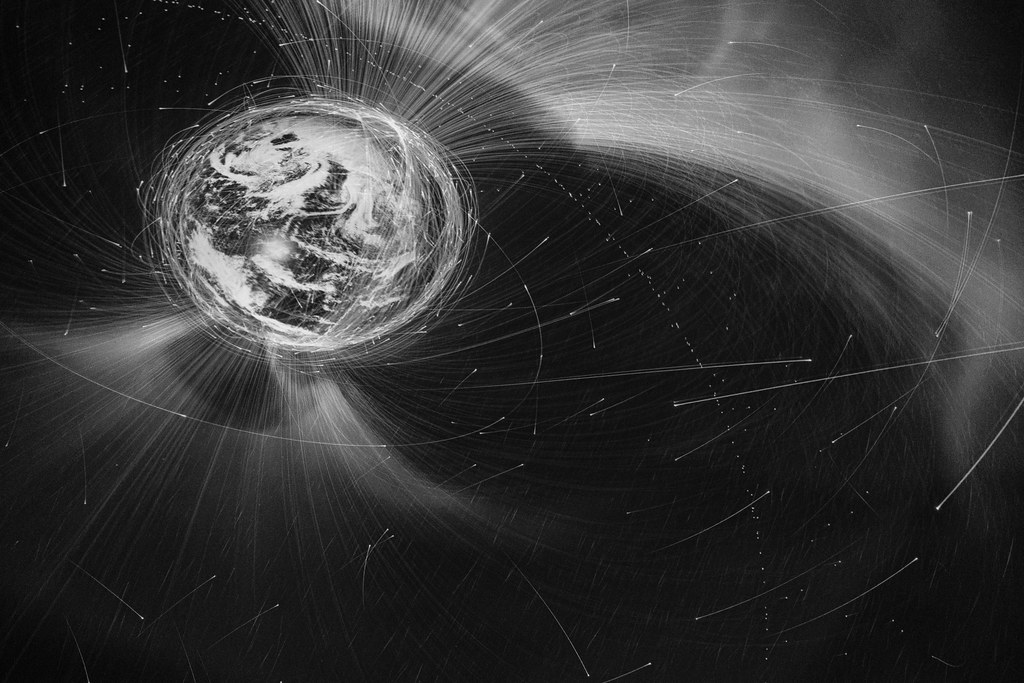For centuries, humans have marveled at birds’ incredible ability to navigate across vast distances with remarkable precision. From Arctic terns that migrate from pole to pole to homing pigeons that can find their way back to their lofts from unfamiliar territory, birds demonstrate navigational prowess that has long fascinated scientists. While birds use multiple cues including the sun, stars, and landmarks, one of the most intriguing mechanisms involves their ability to detect Earth’s magnetic field. This magnetoreception capability serves as an internal compass that guides birds on their epic journeys through changing weather, across featureless oceans, and even at night when visual cues are limited. Recent scientific breakthroughs have revealed fascinating details about how birds perceive magnetic fields and integrate this information into their navigational systems.
The Earth’s Magnetic Field: Nature’s Navigation Grid

The Earth generates a relatively weak magnetic field through the movement of molten iron in its outer core, creating a geodynamo effect. This magnetic field extends from the South Pole to the North Pole and provides a consistent reference framework across the planet. For migrating birds, this omnipresent field offers reliable navigational information regardless of weather conditions or time of day. Unlike visual landmarks that can be obscured by fog or darkness, magnetic field lines maintain their integrity through nearly all conditions. The magnetic field varies in both intensity and inclination (the angle at which field lines intersect Earth’s surface) depending on geographic location, providing birds with potentially rich positional information beyond simple north-south orientation.
The Discovery of Avian Magnetoreception

The scientific journey to understand birds’ magnetic sensing abilities began in the 1960s with German ornithologist Wolfgang Wiltschko’s groundbreaking experiments with European robins. Wiltschko placed the birds in funnel-shaped cages lined with paper and observed the direction of their scratches, which indicated their preferred direction of travel during migratory seasons. When he manipulated the magnetic field around the cages using Helmholtz coils, the birds changed their orientation accordingly, providing the first experimental evidence that birds could detect magnetic fields. This discovery opened a new field of research and challenged scientists to determine how birds could perceive a stimulus imperceptible to humans. Subsequent studies with numerous species confirmed that magnetic sensitivity is widespread among birds, though the exact mechanisms remained elusive for decades.
Cryptochrome: The Light-Dependent Magnetic Sensor

One of the most compelling models for avian magnetoreception involves special proteins called cryptochromes, found primarily in birds’ eyes. These photoreceptive proteins undergo chemical changes when exposed to blue light, creating pairs of electrons with quantum mechanical properties that are sensitive to magnetic fields. Research indicates that cryptochromes in specialized photoreceptor cells in birds’ retinas create a pattern of neural activity that varies depending on the bird’s orientation relative to Earth’s magnetic field. This creates a visual overlay or “map” that birds can perceive, essentially allowing them to “see” magnetic field lines. Experiments have shown that birds require light of specific wavelengths to orient magnetically, supporting the cryptochrome hypothesis and explaining why some birds struggle to navigate in complete darkness or under certain artificial lighting conditions.
Magnetite-Based Magnetoreception

A second proposed mechanism for magnetic sensing in birds involves magnetite, a naturally magnetic form of iron oxide found in small clusters within certain cells of avian bodies. These tiny magnetic particles could physically rotate or shift in response to Earth’s magnetic field, triggering mechanical changes that neurons can detect and transmit to the brain. Researchers have identified magnetite crystals in the upper beak of several bird species, particularly in branches of the trigeminal nerve. When this nerve is severed in experimental settings, birds lose some—but not all—magnetic sensing abilities, suggesting that magnetite provides complementary magnetic information. The magnetite system appears particularly important for detecting the intensity of the magnetic field rather than directional information, potentially helping birds determine their geographic position along a north-south gradient.
The Dual-Sensor Model of Bird Navigation

Current scientific consensus suggests that birds likely employ both cryptochrome and magnetite-based systems simultaneously, creating a sophisticated dual-sensing apparatus. The cryptochrome system provides compass information, helping birds determine direction, while the magnetite system may function more as a map, helping determine position. This redundancy offers evolutionary advantages, allowing birds to navigate effectively under varying conditions and providing backup systems when one sensing method is compromised. The dual-sensor model helps explain experimental observations where disrupting one system doesn’t eliminate magnetic navigation abilities. This complementary arrangement mirrors how birds integrate multiple navigational cues beyond magnetic sensing, including solar, stellar, and landmark-based navigation.
The Role of the Brain in Processing Magnetic Information

Magnetic information from both sensing systems must be processed and integrated by the avian brain to create meaningful navigational outputs. Neurobiological studies have identified several brain regions involved in magnetic information processing, particularly areas within the visual system and the hippocampus. Using techniques like immediate early gene expression mapping, scientists can visualize which neurons activate when birds orient to magnetic fields. The cluster N region in the forebrain appears particularly important for processing light-dependent magnetic information, while the trigeminal nerve carries magnetite-based signals to other processing centers. This distributed neural architecture allows birds to combine magnetic data with other navigational inputs, creating a comprehensive spatial awareness that guides migratory decisions.
Migration and Magnetic Maps

Migratory birds face the remarkable challenge of navigating to specific destinations thousands of kilometers away, often places they’ve never visited before. Researchers theorize that birds may create “magnetic maps” using both the inclination and intensity of Earth’s magnetic field to determine their latitudinal and longitudinal position. First-time migrants appear to possess an inherited magnetic template that guides their initial migration, explaining how juvenile birds can travel to wintering grounds without guidance from experienced adults. Experience enhances this system over time, as birds calibrate their magnetic maps against other environmental cues. Some species demonstrate extraordinary precision, returning to the exact same breeding territory year after year after journeys spanning continents, a feat that likely depends on magnetic field detection integrated with learned landmarks.
Experimental Evidence and Research Methods

Scientists employ diverse methods to study avian magnetoreception, each providing unique insights into this remarkable sense. Orientation cages, similar to Wiltschko’s original design, remain valuable tools for observing birds’ directional preferences under controlled magnetic conditions. Radio tracking and GPS technology allow researchers to follow birds during actual migration, correlating their routes with magnetic field parameters. In laboratory settings, researchers can measure neuronal activity directly through electrophysiology or functional magnetic resonance imaging while manipulating magnetic fields. Genetic techniques help identify and manipulate magnetoreception proteins, particularly cryptochromes, allowing scientists to establish causal relationships between specific molecules and magnetic sensing behaviors. These complementary approaches have steadily advanced our understanding despite the challenges of studying a sense humans don’t possess.
The Influence of Magnetic Anomalies and Disturbances

Earth’s magnetic field isn’t perfectly uniform, containing natural variations and anomalies that can affect bird navigation. Geological features rich in magnetic minerals can create local magnetic aberrations that might temporarily confuse migrating birds. More significantly, solar storms and geomagnetic disturbances can temporarily alter Earth’s magnetic field, potentially explaining some observed disruptions in migratory timing and routes during periods of high solar activity. Researchers have documented cases where birds appear disoriented or delay migration during geomagnetic storms. Human-made electromagnetic fields from power lines, radio transmitters, and urban infrastructure may also interfere with birds’ magnetic sensing abilities, though the extent and consequences of this interference remain active areas of research requiring further investigation to fully understand potential conservation implications.
Evolutionary Origins of Magnetoreception

Magnetic sensing didn’t evolve exclusively for long-distance migration but likely developed from more fundamental navigational needs. Fossil evidence suggests that the ancestors of modern birds were developing magnetoreception long before the evolution of modern migratory patterns. The ability to sense magnetic fields provided advantages even for local navigation, helping birds maintain territory boundaries or find food sources in poor visibility conditions. Comparative genetic studies indicate that cryptochromes evolved hundreds of millions of years ago in early vertebrates and insects, suggesting magnetoreception may be an ancient sense shared across numerous animal lineages. Natural selection has likely refined these systems over evolutionary time, with migratory species developing particularly sensitive magnetic detection mechanisms to support their extraordinary navigational requirements.
Beyond Birds: Magnetoreception in Other Animals

While birds showcase perhaps the most sophisticated magnetic navigation systems, this sensory ability appears across the animal kingdom. Sea turtles use magnetic fields to navigate their oceanic migrations, returning to specific nesting beaches with remarkable precision. Certain fish species, particularly salmonids, employ magnetic detection to aid river and ocean navigation. Among mammals, evidence suggests that some bat species can sense magnetic fields, likely supporting their nocturnal navigation. Even some invertebrates, including certain mollusks, crustaceans, and insects like honeybees and monarch butterflies, demonstrate responses to magnetic fields. This widespread distribution of magnetoreception across evolutionary distant groups represents a fascinating example of convergent evolution, where similar sensory capabilities developed independently in response to similar navigational challenges.
Conservation Implications and Human Impacts

Understanding magnetic navigation has important implications for bird conservation in an increasingly human-modified world. Artificial electromagnetic fields from power infrastructure, communication networks, and urban development potentially create “electromagnetic noise” that could interfere with birds’ navigational abilities. Climate change presents another concern, as some models predict shifts in Earth’s magnetic field parameters that might affect the reliability of magnetically coded migratory information. Light pollution poses a particular threat to the cryptochrome-based system, as artificial lighting can disrupt the photochemical reactions necessary for magnetic sensing. Conservation strategies increasingly recognize these potential disruptions, leading to recommendations for electromagnetic-neutral corridors along major migratory routes and modified lighting in sensitive areas to minimize interference with this critical navigational sense.
Future Research Directions and Unanswered Questions

Despite significant advances, many aspects of avian magnetoreception remain mysterious and require further investigation. Scientists continue searching for conclusive evidence of exactly how cryptochromes translate magnetic information into neural signals that the brain can interpret. The precise neural pathways that process magnetic information and integrate it with other navigational cues need further mapping. Questions persist about individual variation in magnetic sensing abilities and how birds might compensate when this system is compromised. Emerging technologies like gene editing, advanced neuroimaging, and miniaturized tracking devices promise new insights into these questions. Interdisciplinary collaboration between biologists, physicists, and neuroscientists will be crucial for fully unraveling the quantum, molecular, and neurological mechanisms underlying this remarkable sensory system.
The discovery that birds navigate using Earth’s magnetic field represents one of the most fascinating chapters in our understanding of animal sensory perception. This invisible guidance system, operating at the intersection of physics, chemistry, and neurobiology, enables epic migrations that have captivated human imagination throughout history. As research continues to unveil the sophisticated mechanisms behind this “sixth sense,” we gain not only scientific knowledge but also a deeper appreciation for the remarkable adaptations that allow birds to navigate our planet with such precision. Beyond academic interest, this understanding provides essential insights for conservation efforts aimed at preserving the intricate environmental conditions these navigational systems require, ensuring that future generations can continue witnessing the awe-inspiring journeys of migratory birds across our skies.
